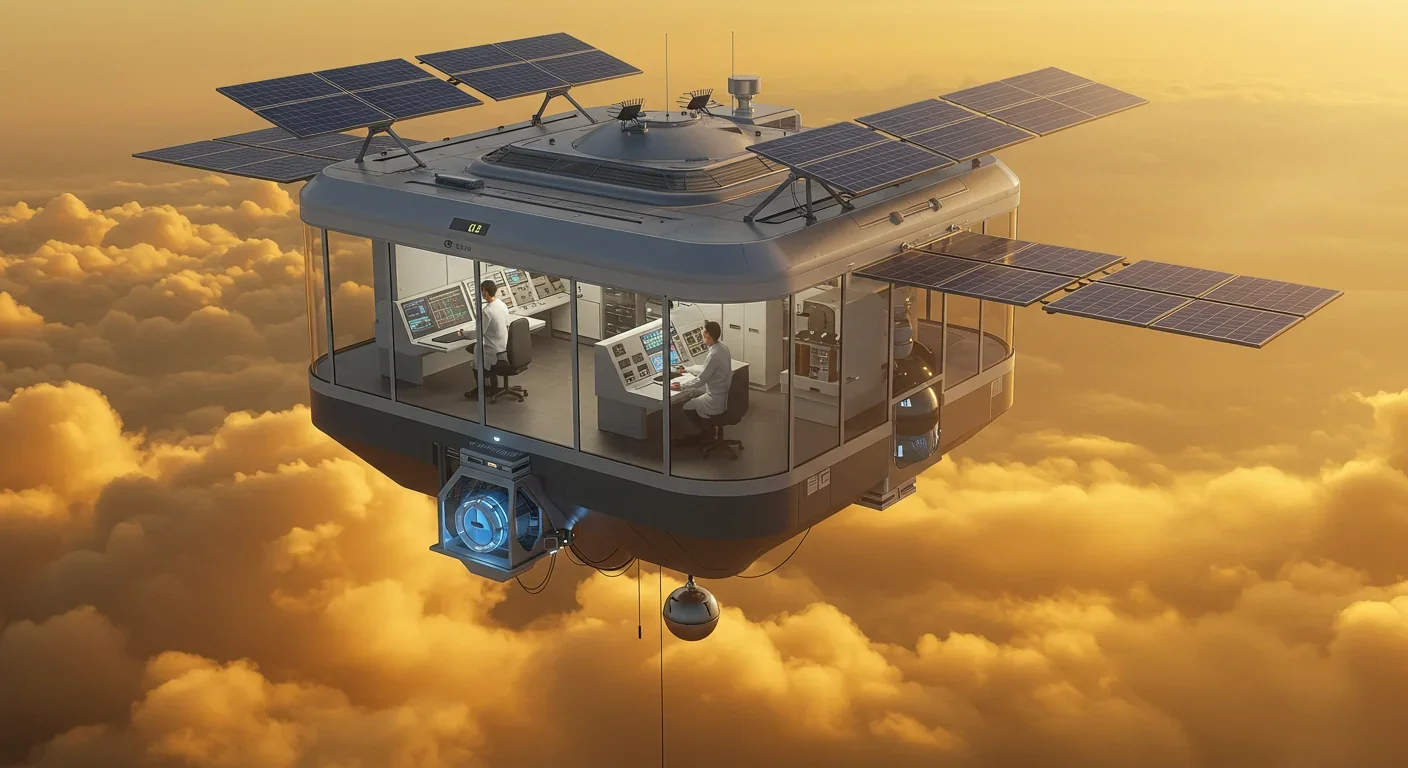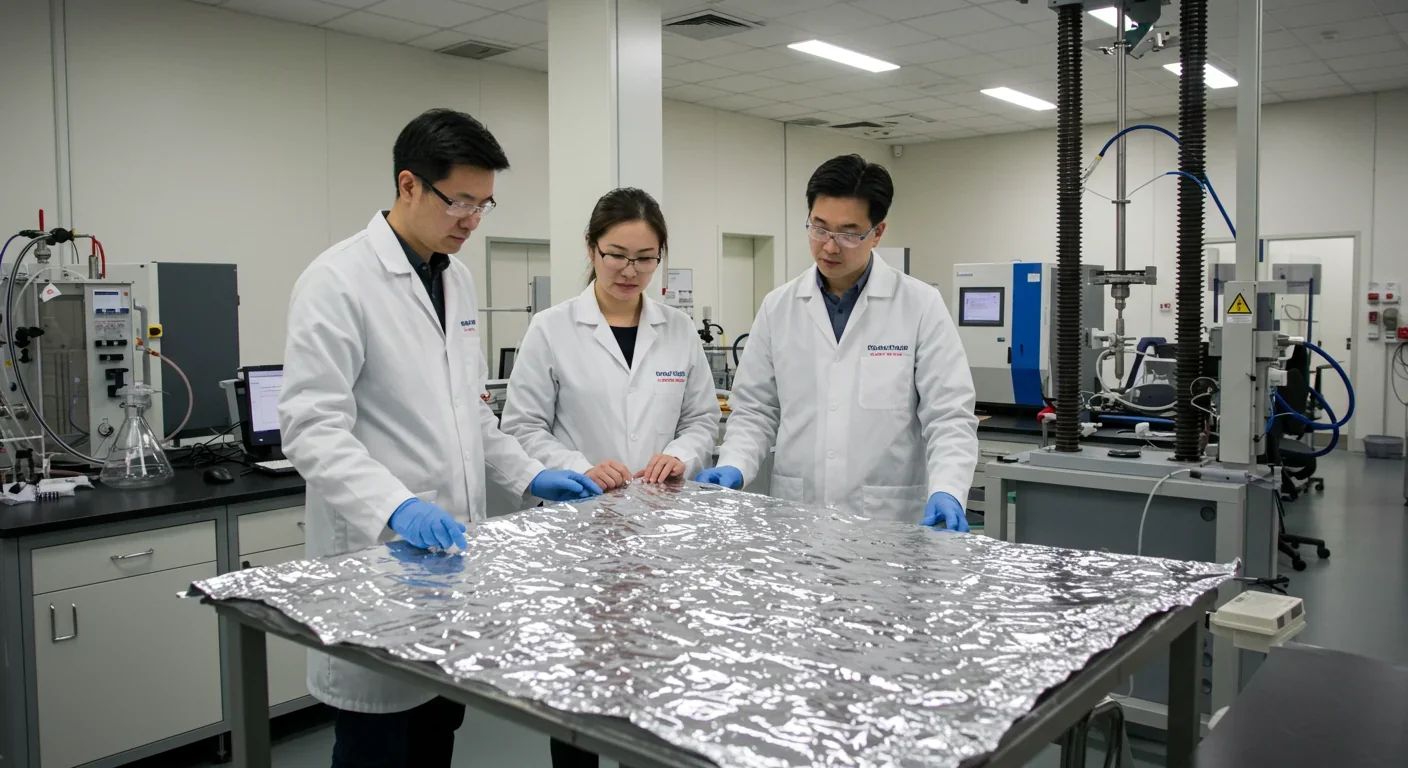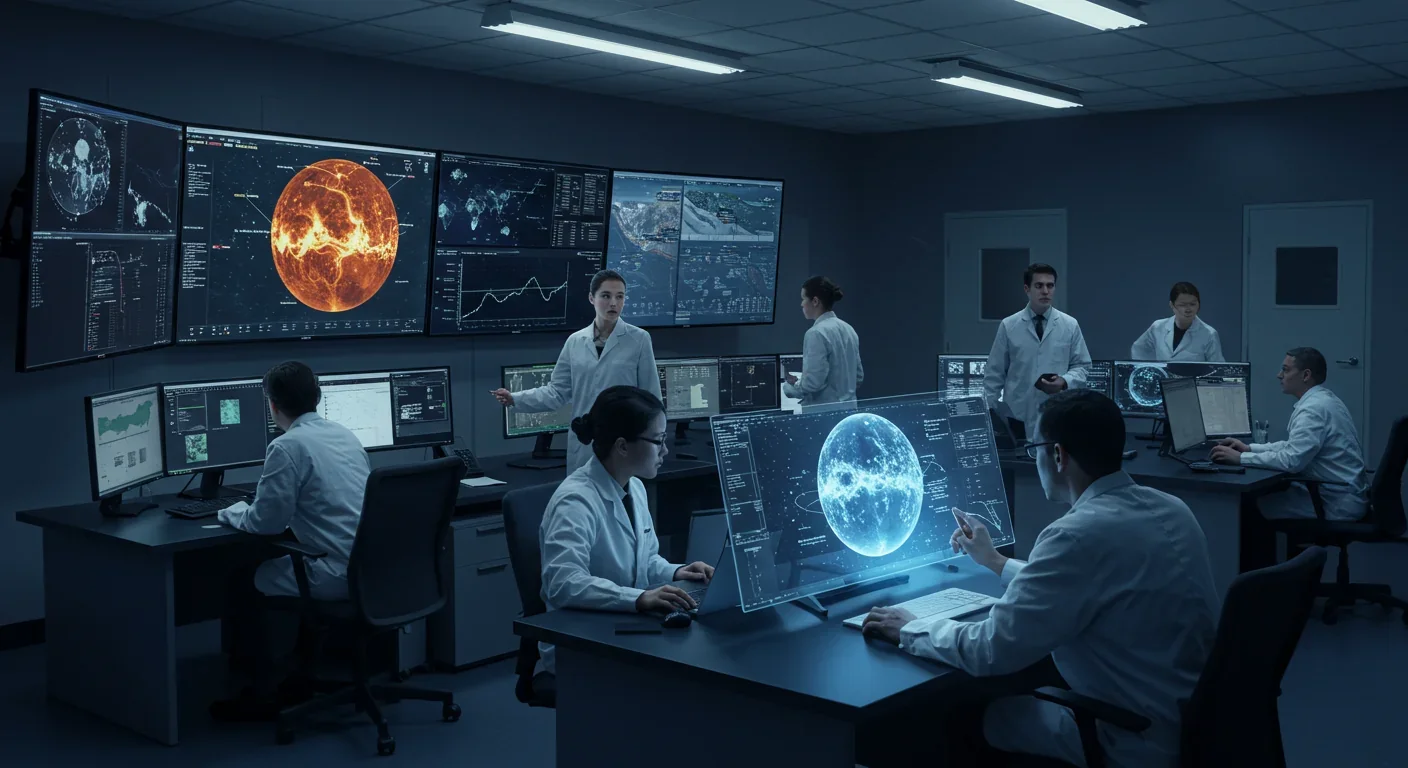Fusion Rockets Could Reach 10% Light Speed: The Breakthrough

TL;DR: Venus's 50-kilometer cloud layer offers Earth-like temperature and pressure, making floating cities scientifically feasible using acid-resistant materials and breathable-air buoyancy. Despite challenges from sulfuric acid and resource extraction, Venus provides better gravity and solar energy than Mars for long-term human habitation.

Forget Mars. The next great human settlement might float above the clouds of our planetary neighbor, Venus. While most space enthusiasts fixate on the red planet's dusty plains, a growing coalition of scientists is making a compelling case for humanity's most audacious architectural dream: cloud cities suspended 50 kilometers above Venus's hellish surface, where conditions eerily mirror Earth's.
Venus earned its reputation as Earth's evil twin for good reason. Surface temperatures hover around 475°C, hot enough to melt lead, while atmospheric pressure reaches a crushing 95,000 millibars - equivalent to being 900 meters underwater. The planet's thick sulfuric acid clouds and toxic atmosphere make the surface fundamentally uninhabitable.
But here's where it gets interesting: at an altitude of 50-60 kilometers, Venus transforms into something remarkably different. NASA's atmospheric data shows this cloud layer maintains temperatures between 20-30°C and pressure roughly equal to one Earth atmosphere. Unlike Mars or the Moon, you wouldn't need a bulky pressure suit here. Just breathing apparatus and protection from acid rain.
The habitable zone exists because of Venus's atmospheric structure. The cloud deck spans 48-70 kilometers in altitude, with the lower clouds providing what researchers call "the most Earth-like extraterrestrial environment known." Despite being bathed in sulfuric acid, these clouds offer conditions where human habitats could theoretically float using breathable air as a lifting gas.
Think about that for a moment: on Venus, a habitat filled with the air we breathe would naturally rise to the perfect altitude, like a balloon. On Mars, you're fighting lower gravity and thin atmosphere. On the Moon, there's no atmosphere at all. Venus's dense CO₂ envelope, typically seen as hostile, becomes an engineering advantage.
The sulfuric acid problem dominates every conversation about Venus colonization. Concentrations range from 75-95% in the clouds, creating what amounts to a corrosive mist that would devour most conventional materials in days.
Soviet engineers faced this challenge head-on during the Venera missions of the 1970s-80s, which provided our foundational understanding of Venus's atmosphere. Venera 9, which orbited Venus in 1975 and sent back the first surface photos, demonstrated that properly designed equipment could survive the descent. The probes lasted about an hour on the surface before the extreme heat and pressure crushed them, but they proved protective systems could work.
Modern materials science offers better solutions. Teflon and fluoropolymer coatings show exceptional resistance to sulfuric acid corrosion. These materials, combined with advances in composite structures, could form the outer skin of floating habitats. Engineers envision multilayered designs: an acid-resistant outer coating, a structural layer providing strength, and an inner pressure vessel maintaining the habitat's environment.

The real innovation lies in buoyancy design. Unlike terrestrial buildings that rest on foundations, Venusian cloud cities would float. Fill enormous envelopes with breathable air (78% nitrogen, 21% oxygen) and they'd naturally settle at the 50-kilometer sweet spot, where internal and external pressure balance. Punctures wouldn't cause explosive decompression because pressure equalizes slowly, giving crews time for repairs.
This pressure-matched design solves another problem: structural stress. Earth buildings fight gravity by standing rigid. A floating Venus habitat moves with atmospheric currents, flexing rather than breaking. The engineering philosophy shifts from "resist everything" to "adapt and flow."
NASA's DAVINCI (Deep Atmosphere Venus Investigation of Noble gases, Chemistry, and Imaging) mission, scheduled for the 2030s, will test technologies essential for cloud city development. The probe must withstand extreme temperature and pressure during its one-hour descent through Venus's atmosphere, carrying a mass spectrometer, tunable laser spectrometer, atmospheric structure sensor, and imaging equipment.
DAVINCI isn't designed for the cloud layer specifically, but its descent data will revolutionize our understanding of atmospheric chemistry and dynamics at various altitudes. The mission will measure trace gases, sulfur compounds, and water vapor concentrations, providing engineers with precise specifications for life support systems.
What DAVINCI proves matters more than what it discovers. Successfully operating instruments in Venusian conditions validates the protective technologies that cloud cities would depend on. The probe's automated systems must make real-time decisions as atmospheric conditions change during descent - capabilities that floating habitats would need constantly.
Beyond DAVINCI, private space companies and international agencies have proposed crewed missions for the 2030s-2040s. These missions would likely focus on atmospheric sampling and technology demonstration rather than permanent settlement, but they represent crucial stepping stones. Each mission tests components: habitat materials, life support systems, navigation equipment, and communication arrays.
The Mars-versus-Venus debate hinges on fundamentally different colonization philosophies. Mars offers solid ground and recent studies of Martian ice deposits suggest accessible water. Its 24.6-hour day roughly matches Earth's circadian rhythms, and its thin atmosphere allows for easier launch and landing operations.
But Venus counters with advantages that Mars can't match. Venus receives twice the solar energy per square meter compared to Earth, and roughly four times Mars's solar flux. A cloud city's solar panels would generate abundant power without Mars's dust storms or its seasonal variations in sunlight.
Gravity makes a compelling case too. Venus's surface gravity sits at 0.9g, just 10% less than Earth's. Mars offers only 0.38g. Long-term exposure to low gravity causes bone density loss, muscle atrophy, and cardiovascular problems. Venusian colonists would face far fewer health complications.
The atmosphere itself becomes a resource. Venus's CO₂-rich air could fuel chemical processes producing water, oxygen, and organic compounds. The 96.5% carbon dioxide and 3.5% nitrogen composition, while toxic, provides abundant raw materials. Cloud droplets contain trace water that could be extracted, though carefully processed to avoid acid contamination.
Travel time factors in too. Venus orbits closer to Earth, with launch windows occurring more frequently than Mars missions. A shorter journey means less radiation exposure for crews and faster emergency evacuation if needed.
Building a self-sustaining habitat in Venus's clouds requires solving problems that don't exist on Earth. You can't grow food in soil when your entire settlement floats. You can't drill for water or breathe outside without protection. Every resource must be recycled or manufactured from atmospheric gases.
The life support system would operate as a closed loop. Colonists would breathe oxygen, exhale CO₂, and rely on chemical or biological processes to regenerate breathable air. Similar systems operate on the International Space Station, though Venusian habitats would need to scale up significantly.
Water extraction presents the biggest challenge. Molecular nitrogen exists in Venus's cloud layers along with trace water in sulfuric acid droplets. Engineers propose using solvent extraction to separate water molecules from acid, followed by neutralization and purification. The process demands energy but produces both water and useful sulfate compounds.
Food production would rely on hydroponics or aeroponics, growing plants in nutrient solutions rather than soil. Venus's abundant sunlight supports vigorous plant growth, and a controlled environment eliminates pests and weather disruptions. Crops would serve double duty: producing food while recycling CO₂ into oxygen.

The 243-Earth-day rotation period complicates solar power planning. Venus rotates so slowly that its clouds actually circle the planet faster than the surface turns, creating a phenomenon called super-rotation. Habitats would drift with these fast-moving clouds, experiencing a day-night cycle determined by atmospheric circulation rather than planetary rotation. This means more consistent sunlight than the surface would receive.
Why invest billions in cloud cities when Earth faces so many problems? The question deserves a serious answer.
Scientific research would benefit enormously from a Venusian presence. Recent phosphine detections in Venus's atmosphere sparked debates about possible biological processes. A permanent research station could investigate these questions directly, studying atmospheric chemistry, possible microbial life, and the planet's mysterious geological features like the recently explained corona formations.
Venus's extreme greenhouse effect offers Earth-relevant climate lessons. Understanding how a planet with less solar absorption than Earth still achieves surface temperatures of 475°C could inform climate modeling and geoengineering research. The mechanisms that drove Venus's runaway greenhouse billions of years ago might help us prevent similar scenarios on Earth.
Economic opportunities would emerge gradually. Venus's upper atmosphere could become a refueling station for deep-space missions, using locally produced propellants rather than launching everything from Earth's gravity well. The abundant solar energy supports industrial processes like manufacturing or data processing, though the business case requires decades of development.
Tourism might eventually justify costs. Imagine luxury hotels floating above alien cloudscapes, offering views of lightning storms that dwarf anything on Earth and sunsets that last for weeks. It sounds far-fetched now, but so did commercial spaceflight before SpaceX.
The technology development alone creates value. Solving Venus's challenges would yield innovations in materials science, closed-loop life support, atmospheric chemistry, and autonomous systems. These technologies would benefit Earth directly, from better air filtration systems to more efficient recycling processes.
Colonizing another planet raises questions that extend far beyond engineering feasibility. International space law remains ambiguous about property rights, resource extraction, and governance of extraterrestrial settlements. The 1967 Outer Space Treaty prohibits national appropriation of celestial bodies, but doesn't clearly address private settlement or resource use.
Who decides if humans should colonize Venus? What if we discover microbial life in those clouds? The phosphine debate illustrates how detection of even simple organisms would complicate colonization plans. Planetary protection protocols might require leaving Venus untouched, or at least limiting human presence to specific zones.
Environmental ethics matter too. Venus has no ecosystem to damage in the conventional sense, but altering atmospheric chemistry through industrial activity could affect scientific study. If we treat Venus as an industrial park, we might destroy data about planetary evolution before we fully understand it.
Access and equity present thornier problems. Space colonization historically emerged from wealthy nations and corporations. If Venus settlements happen, who benefits? Early colonies would likely be research outposts staffed by scientists and engineers, but eventual expansion raises questions about immigration rights, citizenship, and resource distribution.
The psychological impact on colonists deserves consideration. Floating cities offer no escape routes, no wilderness retreats, no connection to Earth's natural environments. Isolated communities might develop distinct cultures, but they'd also face mental health challenges from confinement. Antarctic research stations and submarine crews provide imperfect but instructive analogies.
Some philosophers argue humanity has a moral imperative to expand beyond Earth, ensuring survival if catastrophe strikes our home planet. Others contend we should fix Earth's problems before creating new ones elsewhere. Venus won't settle this debate, but it makes the question urgent and concrete.
No one's moving to Venus next year, or even next decade. The technical challenges alone require decades of incremental progress. But the path exists, traced out in research papers, engineering proposals, and space agency roadmaps.
DAVINCI and similar missions represent the first step: gathering data and testing technologies. Following that, atmospheric sample return missions could collect cloud material for detailed analysis. Small-scale demonstration habitats might launch in the 2040s, testing life support systems and structural designs.
A permanent research station would come next, supporting crews of 10-20 for extended stays. Think of it as Venus's version of the International Space Station, but with better weather outside. This phase would likely span the 2050s-2060s, assuming political will and funding materialize.
Expansion to larger settlements depends on solving economic sustainability. No colony survives on government funding forever. Venus would need either resources worth exporting (difficult given launch costs) or services valuable enough to justify their expense. Manufacturing using Venus's abundant solar energy or hosting data centers cooled by high-altitude temperatures are possibilities, though both require breakthrough innovations in power transmission and data links.
The stationary gravity waves discovered by Japan's Akatsuki mission hint at wind energy potential. Topographic features on Venus's surface influence cloud-layer dynamics, creating predictable air currents. Floating wind turbines could supplement solar panels, harvesting energy from atmospheric super-rotation.
Venus challenges our assumptions about colonization. We picture alien settlements as domed cities on rocky plains, not dirigibles floating through acid clouds. The shift from surface thinking to aerial architecture represents more than engineering, it's a philosophical reframe.
Mars settlement follows Earth's template: find stable ground, build structures, plant flags. Venus demands we think like oceanic engineers, designing for an environment in constant motion. Habitats wouldn't sit still but drift with atmospheric currents, potentially traveling the planet over weeks or months.
This mobility offers unexpected advantages. A floating city could relocate to avoid storms, position itself for optimal sunlight, or travel to interesting geological features for study. Movement becomes a feature rather than a bug.
The cloud city concept also scales differently than surface settlements. Early Mars bases would likely be cramped habitats buried under regolith for radiation protection. Venus's atmosphere provides natural shielding while allowing larger, lighter structures. Habitats could be spacious and visually open, with transparent panels showing cloudscapes outside.
Whether humanity actually builds cities in Venus's clouds depends on factors beyond technology: political priorities, economic opportunities, and cultural will to explore. But the science increasingly suggests we could do it. Venus's atmosphere, long viewed as a toxic barrier, might become humanity's bridge to a multi-planetary future.
The question isn't whether it's possible anymore. The question is whether we'll choose to try.

Recent breakthroughs in fusion technology—including 351,000-gauss magnetic fields, AI-driven plasma diagnostics, and net energy gain at the National Ignition Facility—are transforming fusion propulsion from science fiction to engineering frontier. Scientists now have a realistic pathway to accelerate spacecraft to 10% of light speed, enabling a 43-year journey to Alpha Centauri. While challenges remain in miniaturization, neutron management, and sustained operation, the physics barriers have ...

Epigenetic clocks measure DNA methylation patterns to calculate biological age, which predicts disease risk up to 30 years before symptoms appear. Landmark studies show that accelerated epigenetic aging forecasts cardiovascular disease, diabetes, and neurodegeneration with remarkable accuracy. Lifestyle interventions—Mediterranean diet, structured exercise, quality sleep, stress management—can measurably reverse biological aging, reducing epigenetic age by 1-2 years within months. Commercial ...

Data centers consumed 415 terawatt-hours of electricity in 2024 and will nearly double that by 2030, driven by AI's insatiable energy appetite. Despite tech giants' renewable pledges, actual emissions are up to 662% higher than reported due to accounting loopholes. A digital pollution tax—similar to Europe's carbon border tariff—could finally force the industry to invest in efficiency technologies like liquid cooling, waste heat recovery, and time-matched renewable power, transforming volunta...

Humans are hardwired to see invisible agents—gods, ghosts, conspiracies—thanks to the Hyperactive Agency Detection Device (HADD), an evolutionary survival mechanism that favored false alarms over fatal misses. This cognitive bias, rooted in brain regions like the temporoparietal junction and medial prefrontal cortex, generates religious beliefs, animistic worldviews, and conspiracy theories across all cultures. Understanding HADD doesn't eliminate belief, but it helps us recognize when our pa...

The bombardier beetle has perfected a chemical defense system that human engineers are still trying to replicate: a two-chamber micro-combustion engine that mixes hydroquinone and hydrogen peroxide to create explosive 100°C sprays at up to 500 pulses per second, aimed with 270-degree precision. This tiny insect's biochemical marvel is inspiring revolutionary technologies in aerospace propulsion, pharmaceutical delivery, and fire suppression. By 2030, beetle-inspired systems could position sat...

The U.S. faces a catastrophic care worker shortage driven by poverty-level wages, overwhelming burnout, and systemic undervaluation. With 99% of nursing homes hiring and 9.7 million openings projected by 2034, the crisis threatens patient safety, family stability, and economic productivity. Evidence-based solutions—wage reforms, streamlined training, technology integration, and policy enforcement—exist and work, but require sustained political will and cultural recognition that caregiving is ...

Every major AI model was trained on copyrighted text scraped without permission, triggering billion-dollar lawsuits and forcing a reckoning between innovation and creator rights. The future depends on finding balance between transformative AI development and fair compensation for the people whose work fuels it.